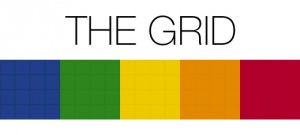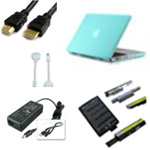Are You A Copycat Designer?
Are you a copycat designer? In today’s share-friendly design marketplace, the question has merit. Consider the past five to 10 design projects you’ve undertaken, and ask yourself what portion of each constituted original work, and what portion was “borrowed” from other designers. If you’re incorporating others’ ideas into more than 50 percent of your work, you are a copycat designer.
Copycatting Limits Your Creativity
Being a copycat designer doesn’t mean you don’t have original ideas or that you’re stealing from others. As previously noted, many designers happily share their work with others: templates, brushes, patterns, icons and more. Using these free – or even paid – elements makes projects more palatable to budget-minded clients. But overuse of these elements can rob your work of originality.
Another factor to consider is design trends. Designing a website mockup to, say, a 960 grid is not copycatting; it’s a design trend and philosophy that requires you to work within established guidelines. In addition, proven design norms cannot be ignored for sake of originality. A top banner newsletter sign-up box or sidebar blog archive, for example, exist in place because they work there – and users expect them to be there. But you don’t have to borrow your subscribe button or archive header style from others.
It’s important to find inspiration in others’ work to stay abreast of evolving design trends, certainly, and they key word is inspiration: use others’ work as a basis for forming your own ideas. It can be easy to settle into a routine in which you essentially find a few designs and shared elements that fit into your design brief, consolidate them into an original design, and pass it off as custom client work. You want to maintain a cutting edge look, after all.
However, consider what is more cutting edge: designs borrowed from others, or truly groundbreaking work you create on your own? Every designer borrows from others, but the best designers do not let borrowing take over the bulk of their work.
If you want to be a better graphic designer, examine ways you can enrich trends and break through norms to develop original designs. Try your hand at making your own icons, brushes and patterns. Look for opportunities to stray from established and expected layouts without sacrificing functionality.
Copycat Design Challenge
After you’ve evaluated your last 10 projects, challenge yourself to develop an innovative design solution for at least one aspect in each of your next 10 design projects. Limit borrowing to less than 20 percent of any given project, and be 100 percent original in at least two of your next 10 projects. Then, compare your last 10 projects against your next 10 projects. I guarantee you’ll feel far more pride in your new work than your old, and it will be strikingly better.
Stop being a copycat designer, and push the envelope of what is possible with design without sacrificing usability. When you do, you’ll not only create more compelling designs, you’ll be a more marketable designer for your unique style and originality.
Author Bio:- Brian Morris writes for the PsPrint Design & Printing Blog. PsPrint is an online commercial printing company. Follow PsPrint on Twitter @PsPrint.





3 comments
Rashmi Sinha
More and more people now a days are embracing the “immovation” route. Bad choice in long run for sure. When you create something out of your mental faculties, it will stand out from the crowd for sure. Hope designers get a grip on their work as well as common sense.
Aditya Nath Jha
Well there is very thin line between inspiration and plagiarism, being a logo designer sometimes even I don’t know whether I am creating something new or just taking a fragment of someone’s imagination and putting it to work!
Irfan Siddiqui
When I read Copycat Designer in Bilal’s G+ feed I was very much intended to read this article.
Few days back, I was looking my FB feed, and I saw a girl who was selling her logos for 100 INR, WTH! Right? I know the price is too cheap but if you had a look over her logos you would have realized from where she’s getting her stuff. YES she was a copycat but in a very bad stage of copying. 😛
I think she should read your article. 🙂